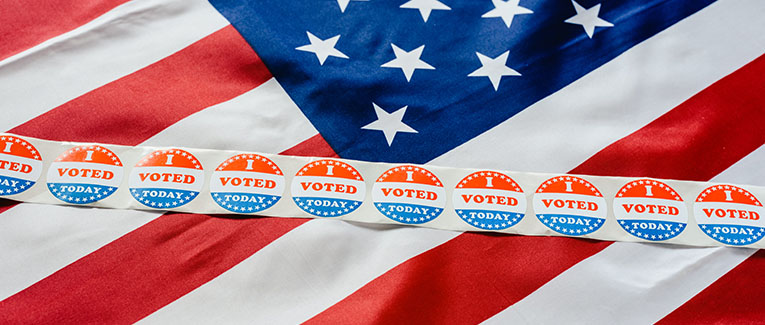
The U.S. election system is one of the largest and most closely followed ones in the world. Every four years, the country sees massive political, social, and economic activity, all driven by the elections. The scale of these events can be a little confusing for newcomers to the U.S. who are not familiar with the local political institutions.
If you are a U.S. citizen, you are eligible to vote. Otherwise, you can’t.
This article will give you the necessary, most important information about elections in the U.S. so that you can be sure of what to expect.
Who is being elected?
The biggest showdown every election cycle is for the office of the President of the United States. The person elected to be President leads the executive branch of government for four years. This office has immense power, and the U.S. President is often considered to be one of the most powerful people in the world.
In addition to choosing their President on Election Day, the American people also cast their votes for members of Congress to represent their states. There are 50 states in the U.S., and each state has a predetermined number of seats in the Upper House (Senate) and Lower House (House of Representatives) of the Congress.
This is the legislative body of the government, and together with the executive, they are responsible for all policy-making and enforcement in the U.S.
So, undoubtedly, the election of candidates to these offices is highly contested. It is an issue that is deeply important to all Americans.
Parties in the U.S. political system
The U.S. is a two-party system; that is, its political field is dominated by two main parties, the Democratic Party and the Republican Party.
The Democratic Party (represented by blue symbols in the media) is the liberal faction. It usually stands for issues like cheaper healthcare, free education, higher taxes, and civil rights. Democrats advocate for greater government influence in the everyday functioning of the economy and society.
The other party is the Republican Party (represented in red). It is also referred to as the ”GOP” – the Grand Old Party. Republicans usually take a conservative approach to politics on issues like climate change, gun control, immigration, and defense.
The President is always elected from one of these two parties, after they secure the party nomination.
The elections, which are also for Members of Congress, determine which party has control over the two Houses. A method of simple majority is followed – whichever party secures more than 50% of the total seats in the House effectively controls it.
The political climate is quite charged, and most Americans are highly involved in the run up to the elections. You will also find frequent debates on popular media outlets between Republicans and Democrats on important policy issues.
How is the President actually elected?
There are two stages of the U.S. presidential election process: the popular vote and the electoral college vote.
The popular vote is the result of the votes cast by the people directly. On the other hand, the electoral college is an indirect vote. State representatives cast their votes to elect the President. The candidate who secures a certain number of electoral college votes wins the election.
Some candidates, like Hillary Clinton in 2016, lose the election even though they won the popular vote. This is because they lost the electoral college vote.
Let’s crunch the numbers
The U.S. has universal adult franchise, which means that an individual over the age of 18 is eligible to vote. However, there may be state-wide regulations on drawing up voter lists and additional eligibility criteria.
How many votes does the President need to secure?
The electoral college has 538 votes up for grabs, so by the rule of majority, the Presidential candidate who secures 270 votes wins the election.
What about the 50 states?
Most states in the U.S. have historically supported either Democrats or Republicans. These are popularly called blue and red states, respectively. For example, North Carolina, Nebraska, and Virginia have been typically red states. Some blue states are Washington, Hawaii, and New Jersey.
There is a third category of “swing states”, also called purple states. These are the states that see close competition between the Democratic and Republican parties and are highly influential in swinging the election one way or the other.
When are the results announced?
The U.S. elections always take place in November of the election year. It is always on the Tuesday after the first Monday of November. All eligible voters can go to cast their votes at their registered voting booth on Election Day.
The second method of casting votes is through mail-in or postal ballots. This method can be used by voters who are unable to go to the polling station on Election Day.
Sometimes, it takes a few days for the results of the elections to be announced, although it is easy to get a fair approximation through exit polls and surveys.
The incumbent (that is, the person already holding the Presidential Office) stays in power until January, after which the elected President is sworn in. After a grand inauguration ceremony, the new President announces his picks for the head of all executive departments of the government.
They pick “secretaries” to head these departments, positions such as Secretary of Defense, Secretary of State, Secretary of Education, etc. These nominations have to be confirmed by the Senate before they take office.
So, by January, the President and his Cabinet are sworn in and begin to discharge their duties.
The U.S. election is a magnificent event that captures the attention of the entire world every four years. For someone having recently moved to the U.S., it is useful to know how the process works. The pointers in this article should help you to familiarize yourself with U.S. Elections 101.

